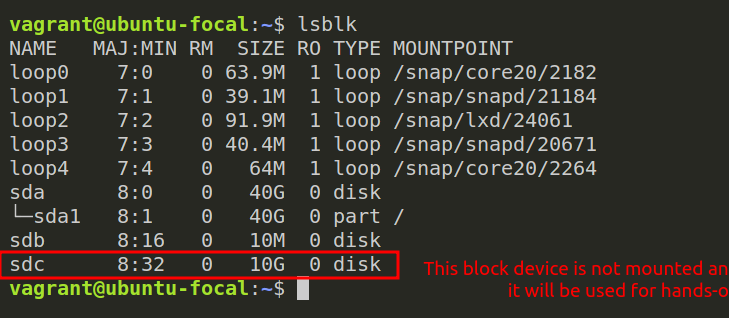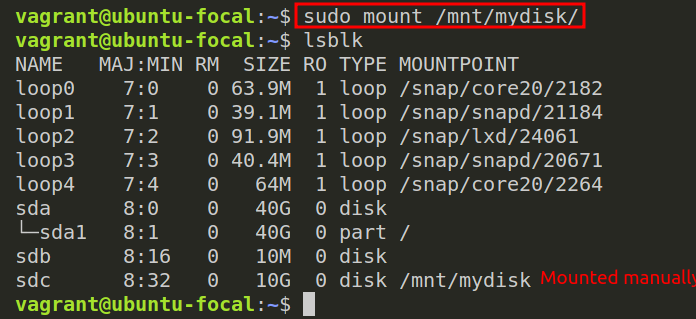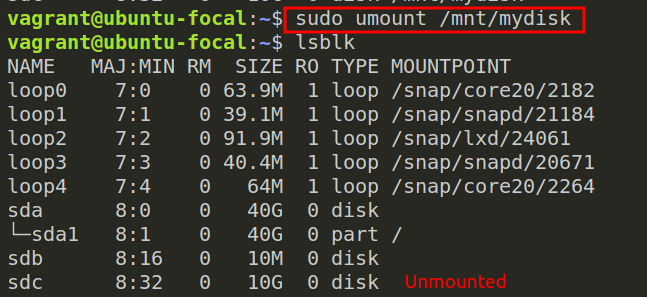The /etc/fstab file in Linux
 Karlygash Yakiyayeva
Karlygash Yakiyayeva
The fstab file in Linux stands for "filesystem table" and is commonly found in the /etc directory. It typically lists all available disk partitions and other types of file systems, their mountpoints and mount options. fstab is meant to be only read by programs and never written except by the system administrator. It is read by the mount command, which happens automatically at boot time to determine the overall file system structure, and thereafter when a user executes the mount command to modify that structure. The system administrator has to properly create and maintain this file.
How fstab is Structured
The table itself is a 6-column structure, where each column designates a specific parameter and must be set up in the correct order. The fields of the table are as follows from left to right:

Block device - the device that should be mounted. The most typical way to reference a block device is by using its location
/dev/sda1or by using itsLABELorUUID(Universal Unique IDentifier). The latter is the preferred method since it guarantees to univocally reference a filesystem. OnGPTpartitioned disks it’s also possible to reference a filesystem by usingPARTUUIDorPARTLABEL.Mount point - specifies the
mountpointfor the filesystem. It is a directory in the system that should be used to access its content. This should always be provided except if the block device is used as a swap. In that case"none"should be used.Filesystem type - the type of filesystem in use on the raw block device or partition. Linux supports many filesystem types:
ext4,xfs,btrfs,f2fs,vfat,ntfs,hfsplus,tmpfs,sysfs,proc,iso9660,udf,squashfs,nfs,cifs, and many more.Mount options - a list of options when mounting the filesystem. To use the default set of mount options we specify
defaultsas a value. The kernel default is usuallyrw, suid, dev, exec, auto, nouser, async.suid - respect SETUID and SETGID bits;
exec - allow executing binaries and scripts;
noauto - do not mount when
mount -ais given (e.g., at boot time);user - allow a user to mount;
nouser - make the filesystem not mountable by a standard user;
async - perform I/O operations on the filesystem asynchronously;
owner - allow a device owner to mount;
nofail - do not report errors for this device if it does not exist.
Dump - enable (1) or disable (0) the backing up of the device/partition. The value is used by the dump backup program (if installed) to know what filesystem should be dumped. Usually, this field is set to 0, which disables it.
Pass - establishes the order by which another utility,
fsckshould check filesystems on boot.0means thatfsckwill not check the filesystem. Numbers higher than this represent the check order. The root filesystem should be set to1and other partitions set to2.
An example of fstab table on a Vagrant Ubuntu virtual machine.

Each filesystem is described on a separate line. Lines starting with '#' are comments. Blank lines are ignored. Fields on each line are separated by tabs or spaces.
Hands-on Exercise Overview
The main purpose of this hands-on exercise is to gain practical experience in configuring filesystem mounts using the /etc/fstab file. This hands-on shows how to add a new entry to the /etc/fstab file to mount a filesystem and tests the configuration by mounting and unmounting the filesystem.
Hands-on Exercise
Run the command that allows us to find out whether there are storage volumes that are not mounted:
lsblk
To get a listing of mounted devices and find out whether our disk device is mounted or not, run:
mount | grep sdc 💡Choose
💡Choose/mntdirectory for permanent storage to mount the disk.To add a new entry to the end of the
/etc/fstabfile:sudo vim /etc/fstab /dev/sdc /mnt/mydisk ext4 defaults 0 0
To create the directory for the storage volume to be mounted:
sudo mkdir /mnt/mydisk💡Without this directory exists, thefstabfile would not be able to find it and it will cause the problem.To mount the device manually, run:
sudo mount /mnt/mydisk
This command assumes that the details of what to mount (like the device or remote filesystem) are already specified in the
/etc/fstabfile. The target directory/mnt/mydiskwas found in thefstabfile and the system knows that this directory is associated with the device/dev/sdc. Thus, themountcommand was simplified.To unmount the device, run:
sudo unmount /mnt/mydisk
To ensure the new entry mounts correctly by simulating the boot-time mounting process, run:
sudo mount -a
This command automatically mounts all filesystems specified in the
/etc/fstabfile without requiring further human interaction. By running this command, you instruct the system to read/etc/fstaband mount all listed filesystems according to the defined parameters, making it useful for ensuring all necessary filesystems are mounted, especially after a system reboot.💡The optionnoautoin the mount options field of thefstabfile does not mount whenmount -ais given (e.g., at boot time). There are several reasons to use this option. 1. It allows you to control when these filesystems are mounted. 2. It simplifies the mount command since there is no need for the device name, and only the target directory can be referred to.To find out the UUID of the storage volume, run:
sudo blkid
It is recommended to use the UUID (Universally Unique Identifier) of a storage volume instead of the device path (like
/dev/sdc) in the/etc/fstabfile, because UUIDs are unique and remain constant while device paths can change depending on the order in which devices are detected by the system.
ro since it prohibits writing or deleting the storage volume.References:
Subscribe to my newsletter
Read articles from Karlygash Yakiyayeva directly inside your inbox. Subscribe to the newsletter, and don't miss out.
Written by

Karlygash Yakiyayeva
Karlygash Yakiyayeva
Postgraduate in Communications Engineering with working experience in the Support Desk and self-study in software development.